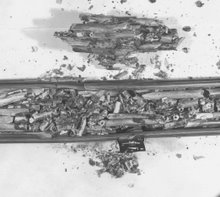Below is an old (2004) NRC interpretation of the Paks game. The NRC states that the Paks incident was under conditions "... more severe than a traditionally analyzed loss of coolant accident ..." That is not only false, it is very, very false. The power density of the Paks fuel, many days after reactor shutdown, was minuscule in comparison to a traditionally analyzed loss of coolant accident.
Office of Nuclear Regulatory Research
Items of Interest
Week Ending November 19, 2004
Meetings on Fuel-related Projects: Studsvik and Paks
The Studsvik Cladding Integrity Project was organized by Organization of Economic Cooperation and Development (OECD) to better understand the fundamental mechanisms of cladding failure during normal operation and anticipated transients. The first formal meetings of this project were held at the Studsvik laboratory on November 8-10, 2004, and were attended by a representative from the Office of Nuclear Regulatory Research. Although this project was originally designed to serve industry needs, the mechanisms being studied involve hydrogen embrittlement and delayed hydride cracking. These mechanisms play an equal role in cladding behavior under accident conditions of safety significance, so the project is also of interest to NRC.
In addition, OECD is organizing a small international project to examine the damaged fuel from the cleaning incident at the Paks-2 nuclear power plant in Hungary. A meeting of fuel experts was held at the Studsvik laboratory immediately following the other meetings, and NRC's representative attended the Paks meeting as well. Because the Paks incident resulted in conditions more severe than a traditionally analyzed loss-of-coolant accident, yet the fuel remained well below any melting temperature (i.e., it was coolable), this project appears to have the potential to provide significant insights to fuel behavior under accident conditions.
Friday, September 7, 2007
Subscribe to:
Post Comments (Atom)

No comments:
Post a Comment